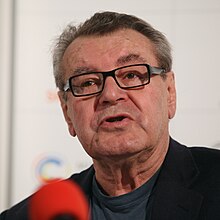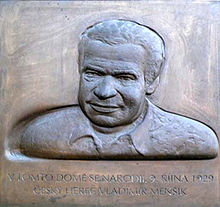Loves of a Blonde
Forman based his story on an incident from his past and the filmmakers created a realistic look and feel by filming on location in a small Czech town with a shoe factory, utilizing a largely non-professional cast, relying on a considerable amount of dialogue improvisation, and employing documentary-style cinematographic techniques.
The film is now considered one of the most significant examples of the Czech New Wave, a movement which took advantage of a temporary relaxation of totalitarian control over creative artists to use cinema as a means to explore new narrative strategies while making pointed critiques of social and political conditions behind the Iron Curtain.
One night, she and a fellow shoe-factory-worker friend lie in bed in their dormitory, discussing the ring given to Andula by her boyfriend Tonda and gossiping about her flirtatious encounter with a forest ranger.
Realizing that the gender disparity is impairing morale and productivity, the factory supervisor arranges for an army officer to organize military maneuvers near the town.
Anticipation runs high on both sides, with the girls expecting to meet young men, while the recruits, many of whom are actually middle-aged reservists, out-of-shape and already married, look forward to a night of seduction.
For these people, the mixer is a flop, with the girls retiring to the lavatory to devise a way to escape their pursuers and the reservists arguing with each other over expenses and speculating on the necessity of going to the woods to have sex.
Although Andula hears nothing from Milda after their night together, she still expects to reunite with him shortly, so she breaks off with Tonda, who storms the dormitory demanding his ring back.
After listening to a speech by the housemother on the virtues of fidelity and commitment, she packs up her suitcase and arrives on Milda's doorstep in the big city, ready to resume their romance.
[3] Unsure of what the next project should be, Forman recalled an experience he had had driving around Prague late one evening when he had encountered a young woman struggling to cross a bridge while carrying a heavy suitcase.
He gave her a lift and learned her story: she had come to the big city from Varnsdorf, where she had been seduced by a young engineer, who had given her a phony address in Žižkov and promised to take her away from her dreary life.
"[8] Despite this objection, Vlastimil Harnach, the head of the studio, approved proceeding with the film in part because, due to the political and cultural thaw in Czechoslovakia at the time, decision makers were anxious to avoid the appearance of overt administrative interference in the creative process.
[11] For the title role, Forman selected his 18-year-old ex-sister-in-law, Hana Brejchová, because he had known her a long time, trusted her, and had great respect for her natural talents: "She had an amazing ability of free expression, but with the risk that she didn’t recognize the extent.
"[12] Since he was working with a largely non-professional cast, Forman's operating procedure was never to share the script with any of the performers, because if he had given them the screenplay, "they’ll take it home to read, and their wives will end up directing your movie".
[18] Instead, he chose to explain each scene in great detail just before starting to shoot takes, reciting the dialog from memory only one time, so that when the camera was rolling the actors had to try to remember as much as they could of what he had told them and then improvise to the best of their ability what they had forgotten or only half-understood.
"[19] Critics have often admired Ondříček's success in sustaining low-contrast lighting throughout the film, rendering "a sweetly mysterious softness, as if a principle of compassion existed in the world alongside its cruelty".
[24] Anderson was so impressed by Ondříček's work, that he brought the cameraman to England to film The White Bus and if...., announcing that he had found a person with a new sensibility, “a new pair of eyes”.
After waiting for a long time to hear from him, and telling all her friends that she would shortly be summoned to her love nest, she packed up her belongings and traveled to Prague, only to be spurned in no uncertain terms.
"[27] Interspersed with these gags are extended character improvisations, such as Milda's discussion of Picasso, his mother's rants at the dining table, and the factory supervisor's appeal for the army's support.
[28] One of these scenes, which was included in the US version, involved a slapstick sequence in which Milda, the pianist, tries to pick up a buxom girl on the streets of Prague, only to have her trick him into entering the wrong bedroom of the four-story building in which she lives, disturbing the sleeping residents.
The old man wants to sleep; the son would like to get thrown out so he can join the girl on the couch, but the mother runs the show and won't tolerate any such filthy ideas under her roof.
To everyone's surprise, though, the movie functioned as a "great big classified ad", in that hundreds of Czech boys traveled to Zruč nad Sázavou and camped out in the woods in hopes of hooking up with the female factory workers, who responded appropriately by sneaking out of their dorms at night for assignations with the campers.
[40] Critical reaction within Czechoslovakia tended to focus on the film's perceived negativity with regard to social and political conditions in the country, and, for that reason, it was not distributed at all within the Soviet Union.
[48] One of the film's most influential champions was Jean Collet, writing in Cahiers du cinéma that, by capturing the momentary indiscretions of his characters on the screen, Forman forces the audience into a voyeuristic situation that induces embarrassment and laughter.
[62] Diane Sippl has noted that, once Forman came to America and created his high-profile Hollywood productions, such as One Flew Over the Cuckoo's Nest, Hair and Amadeus, he was able to introduce into commercial cinema the same qualities that characterized his early films like Loves of a Blonde: "An acute observation of the ironic details of mundane life; an intimate understanding of emotions, both projected and silenced; a keen sensitivity to the moment when solemnity melts into farce,"[63] "(Loves Of A Blonde) endorsed everything I was trying to do in my own work but hadn't managed yet.
In 2002, it was released as a DVD by Criterion Collection, in a new digital transfer, with restored image and sound, a video interview with director Milos Forman, a deleted scene and new & improved English subtitle translation.



